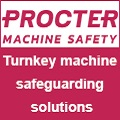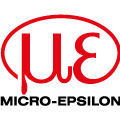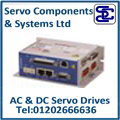
Posted to News on 20th Mar 2013, 12:54
Application-oriented research boosts drive technology
In the coming years, sectors such as the semiconductor industry, life sciences or biotechnology will continue to grow. Increasing requirements in these sectors often affects supporting technologies; a typical example of this is found in drive technology: inspection and manufacturing systems in the semiconductor industry for example, normally use air-bearing technology and magnetic linear motors. However, the requirements for precision will continue to increase up into the nanometre range. Such systems also reach their limits when applications require work in a vacuum or nitrogen atmosphere. This issue has now been taken up by drive specialists, who have already achieved promising results with a new electromagnetic nanopositioning system.
When a feeling for markets, competence and teamwork ability come together, the user profits. This is currently being proven by a collaboration between PI (Physik Instrumente) in Karlsruhe and IMMS (Institut fr Mikroelektronik- und Mechatronik-Systeme) and the Department of Mechatronics of Ilmenau University of Technology. The result of their collaboration is a novel nanopositioning system based on the principle of magnetic levitation. The platform levitates on a magnetic field that is generated by six coils and is actively monitored via a 6-D sensor. The magnetic field functions as a drive and actively guides the platform.
The drive and the compact high-resolution measurement system for the six degrees of freedom was developed so that the platform remains passive, in other words no cable connections are necessary. A two-dimensional, optically incremental measurement system records the position with capacitive sensors and serves to control the drive in all axes. In this way, objects can be moved linearly or rotationally on a plane with a previously unattained guiding accuracy.
Dr Rainer Gloess, Head of Advanced Mechatronics at PI, says: "The current, already quite advanced development study "PIMag 6D' positions with a resolution of 10nm. If the system moves on a circular path with a diameter of 100nm, for example, the maximum deviation from the ideal path is only a few nanometres."
The prototype currently has a motion range of 100 × 100 × 0.15mm ³. Trajectory motions can be carried out at an acceleration of up to 2m/s2 and a velocity currently of up to 100mm/s with nanometre precision. The digital motion controller, based on a modular system from PI, can process different geometry files as well as coordinate transformations and offers an optimum basis for a successful new product line.
To find out more about the electromagnetic nanopositioning system please go to www.pi.ws/.
Trent House, University Way
Cranfield Technology Park
MK43 0AN
UNITED KINGDOM
+44 (0)1234 756360

















